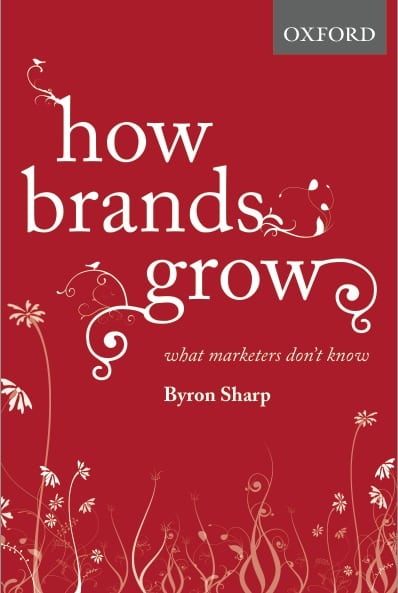
There are times in the lifespan of a radio station when making changes makes sense. Often, these changes are guided by research. A library music test is a great opportunity to freshen up the sound of the station. A perceptual study may indicate that a shift in music strategy or positioning would be a sound move.
On the other hand, high value propositions from radio research studies can manifest themselves in learning what not to change on your station. Sometimes research indicates the audience is picking up on an image you’re trying to build, like “The Alternative Station.” It may tell you that a new morning show feature has relatively low familiarity but has high excellent scores among those familiar with it.
In “How Brands Grow” by Byron Sharp, the author writes “Again and again it appears in numerous product categories, markets and countries that there is a fundamental law of brand size. Big brands have markedly large customer bases.”

Therein lies the ultimate goal of media research. Use the data to build a bigger brand to draw a bigger audience.
One problem. Humans like to change things.
I was a radio program director and sometimes fell into the trap of Inside Thinking. This is when you think like someone who works for the radio station, rather than putting yourself in the shoes of your listener. When I put a sweeper or promo on the air, I generally used my gut to determine when to take it off, which was usually when it sounded like it was “getting burned.”
Of course, I didn’t listen the way my listeners did. My TSL—or time spent listening—was way higher. When something sounded burned to me, it was probably nowhere near ready to come off.
Outside Thinking would have dictated patience with that sweeper or promo.
A program director may implement a positioner on the air, like “The Best Variety of the 80s, 90s and Today”, knowing from the research that’s an image the station should build. At first, the line is delivered multiple times an hour. Then, the jocks aren’t saying it as much. Some of the new sweepers have the slogan in them and some don’t. You’re feeling “burned” on the line.
Your listener isn’t feeling burned on the line. Unless it is a strong, established image, your listener barely knows you’re saying it.
Building images takes time. Outside Thinking dictates you’re probably not saying it enough.
“That promotion isn’t working.” How often did you run it and for how long?
“That feature isn’t working.” Did you give enough time for the audience to get familiar with it?
Why do we constantly feel the need to change things?
There are a few iconic brands in every category and there isn’t much changing going on. Big iconic brands understand it takes time to build images. Once an image is built, you don’t change things for the sake of change.
A Coke can is red and the McDonalds arches are yellow. If it were the other way around tomorrow, your brain might melt.


Big iconic brands don’t often change logos and colors.
Sure, there are times when a radio station needs to change its logo and colors. But, it shouldn’t be just for the sake of change. Can you think of some radio brands that have kept the same logo for a long time? Chances are they’re big brands.
McDonald’s has kept the same slogan (“I’m lovin it”) for the past 15 years.
Get your singing voice ready. “Nationwide is on your side.”
Radio station listeners generally consume your brand the same way they do other brands.
If a key message is “Traffic and Weather Together”, don’t get tired of saying it.
If you’ve got a catchy jingle they sing back to you, don’t get tired of playing it.
If a key promotion is the Workday Payday, don’t get tired of running it.
If a key artist for your station is Justin Timberlake, don’t get tired of all those Justin promos.
“I’m burned on all those Justin promos. The listeners will get sick of them.”
No they won’t.
Don’t change for the sake of change.
Be an Outside Thinker.
